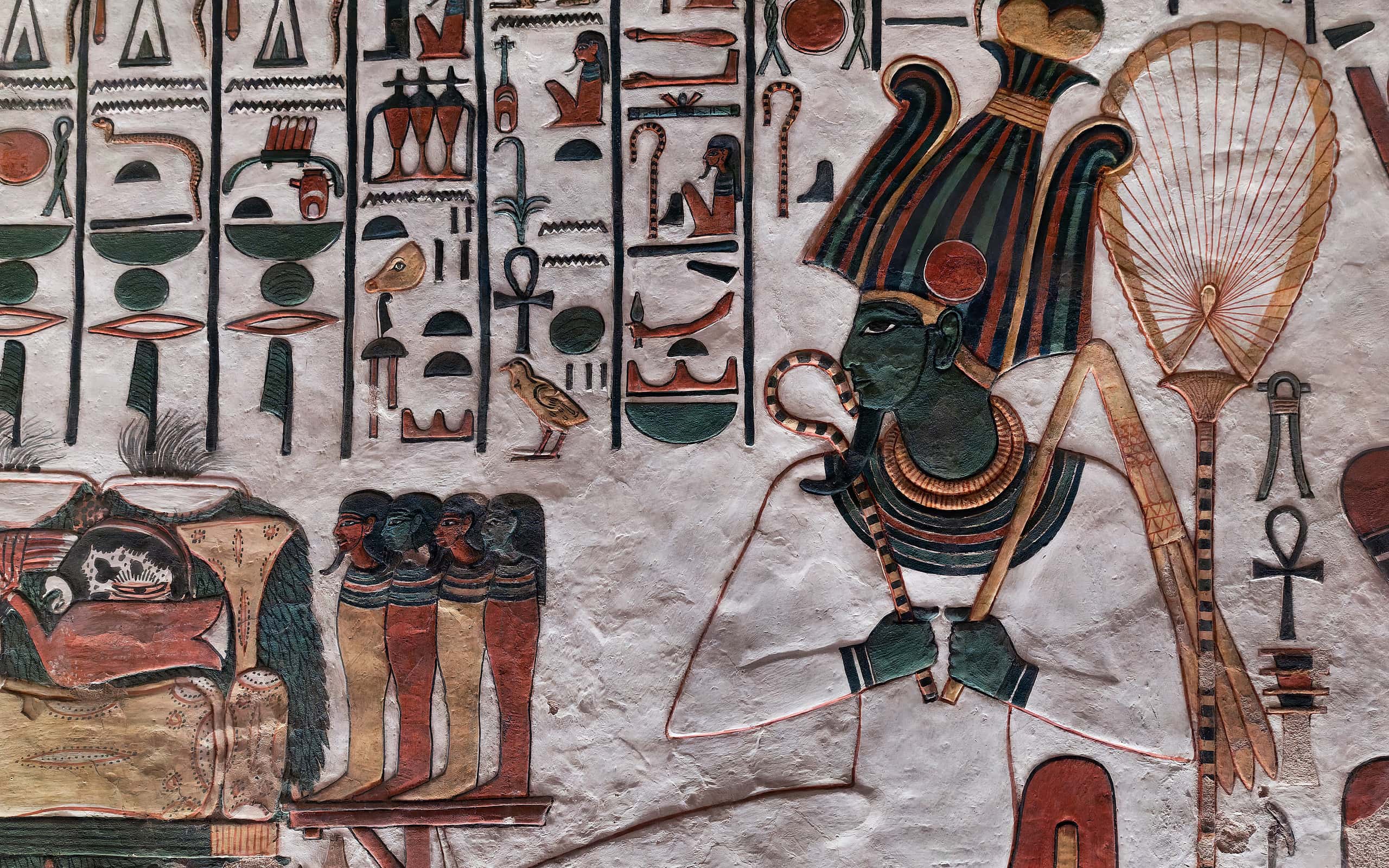Early civilizations in the world relied on their beliefs and imaginations to create the myths that explained how their existence came to be. Creation myths all over the world (like the creation myth of Japan) gave ancient people insight into their own lives.
Ancient Egypt has four unique creation myths that focus on a different part of how the world came to exist. Keep reading to discover all four myths — and learn more about the central themes of ancient Egyptian mythology.
A Quick History of Ancient Egyptian Mythology
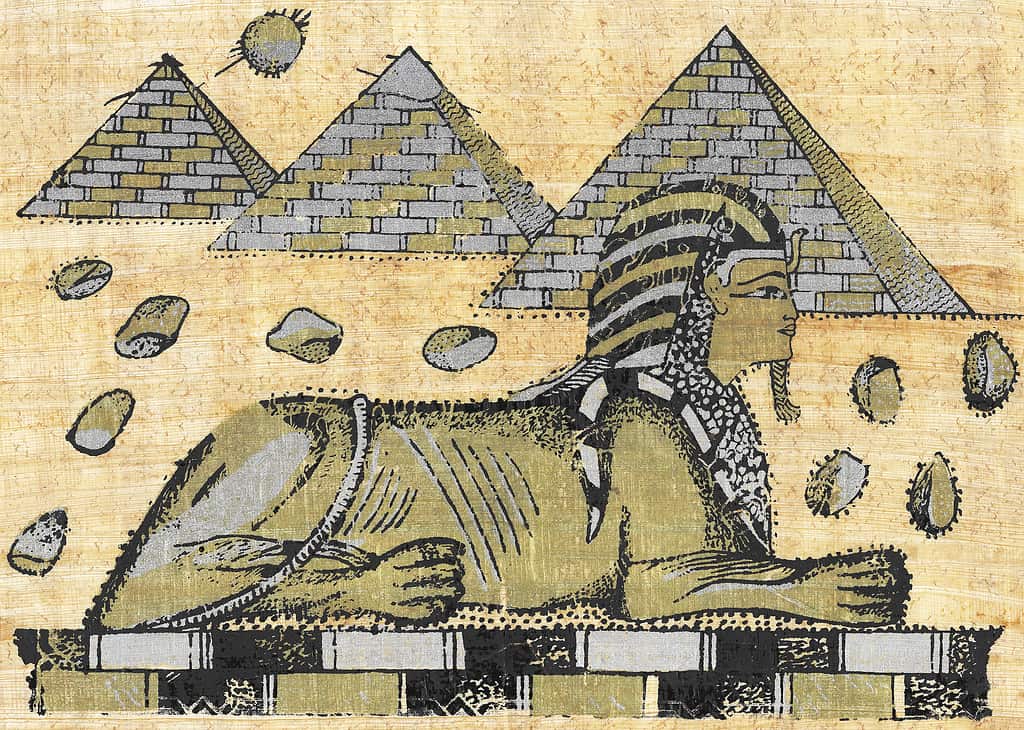
Egypt’s oral history dates over 4000 years before the common era.
©bravo1954/iStock via Getty Images
Ancient Egypt remains one of world history’s most powerful kingdoms. Spanning for thousands of years, the religion and mythology held by ancient Egyptians persisted across pharaoh reigns and generations.
Between the predynastic era in 4300 B.C.E. and the Ptolemaic Dynasty of 30 B.C.E., ancient Egyptians created a massive pantheon of gods and goddesses that ruled the natural and divine worlds. They ferried souls into the afterlife, influenced drops, and even enabled the sun to rise each day.
Like other creation myths of historical civilizations, Ancient Egyptian mythology helped people of the time to understand the world around them.
The Egyptian Creation Myths
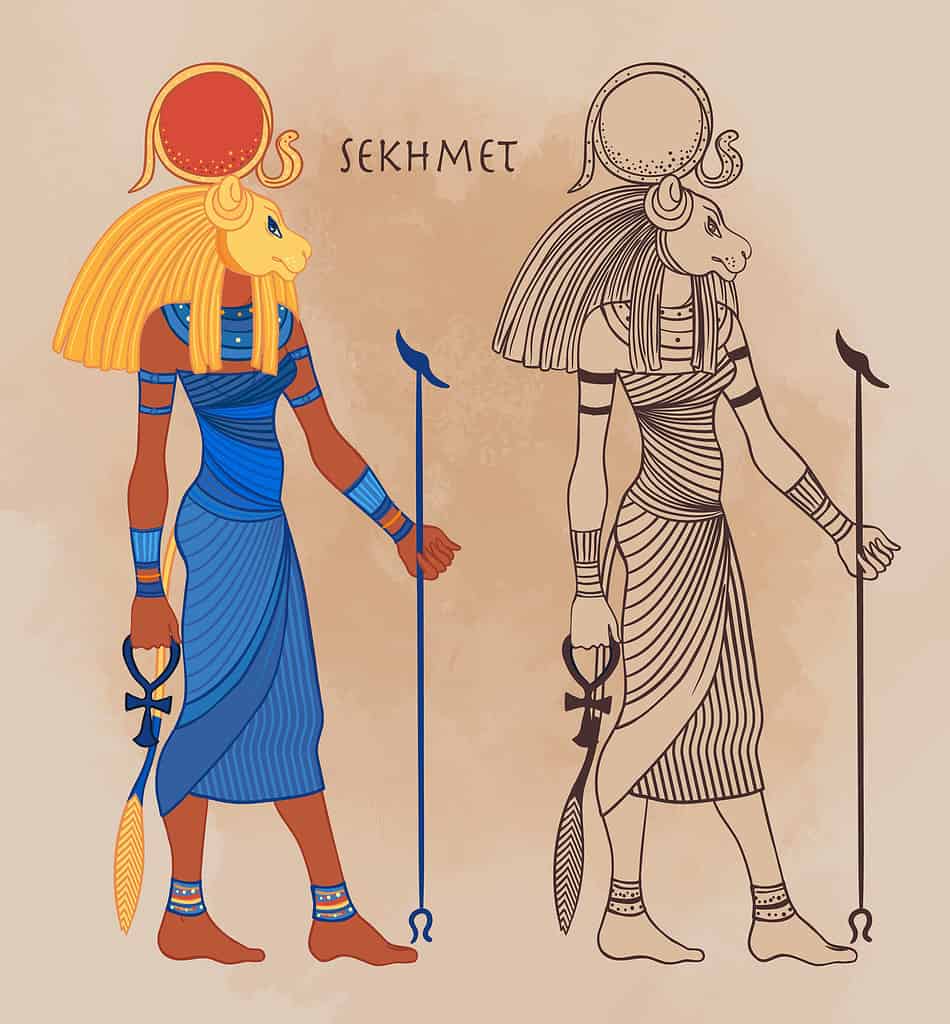
Sekhmet was the goddess of the sun, fire plagues, healing, and war In Egyptian mythology.
©vgorbash/iStock via Getty Images
With thousands of years to span and no internet or cell tower to communicate, the ancient Egyptians created four distinct creation myths based in the major cities they resided.
Egyptian mythology is complex, beautiful, and comprehensive. The summaries below do not cover the most in-depth plot points, nuances, and characters. Additionally, because the Egyptian pantheon has over 2,000 deities, this article only touches on a few of the creation-centric powers.
Heliopolis
According to the Heliopolis creation myth, Atum created the world. Before the beginning of anything, the universe was a massive sea of chaos called Nu. Atum existed amid the unutilized inertia in the sea and created themselves by speaking their name. When they came to being and realized they were alone, Atum created the land to stand on and children — a son (Shu) and daughter (Tefnut) — with whom they could experience the world.
Atum allowed their children to wander the world they’d created but soon missed their company and worried for them. They sent their eye to find and bring back Shu and Tefnut, who returned and had children of their own. They created two gods, Geb, the earth god and Nut, the sky goddess. When Atum’s eye returned and found that Atum had replaced it, it despaired. Atum, feeling love for both eyes, returned the eye that had found their children into their head and it became Ra, the sun god. When Atum’s children returned to them, they became so overjoyed they cried and created the creatures and humans that would live on the earth’s surface.
The third generation of gods begotten of Geb and Nut added four more deities — Osiris, Isis, Set, and Nephthys — rounding out the pantheon of nine deities known as the Ennead.
Hermopolis
Instead of focusing on the creation of the world from the offset, the Hermopolis creation myth centered on the Ogdoad — four pairs of gods and goddesses — and their powers that influence the natural world.
- Nun and Naunet represented the primordial waters.
- Heh and Hauhet represented infinity.
- Kek and Kauket represented primordial darkness.
- Qerh and Qerhet represented air and/or invisibility; however, the fourth pair remains inconsistent across different accounts. Other names for the pair include Nu and Nunu or Amun and Amunet.
The Ogdoad were creator gods and converged at some point, creating a cosmic egg that begot the primordial, pyramid-like mound that birthed the sun. The sun then rose into the sky and created light for the world, where living beings could begin to exist.
Thebes
Though not inspired by the Hermopolis creation myth, the Thebes myth holds that Amun served as more than one part of the fourth pair of gods. It says that Amun is the force behind every living thing on the earth. Also called Amun-Ra, he served as the sun god and controlled so much of the world, he would even determine the lifespans of individual humans.
The Theban Triad of Amun, Mut, and Khonsu maintained their individuality but gathered together as a father-mother-child group that brought forth the world.
Memphis
The Memphite theology uses a triad grouping as Thebes did — but this centered on Ptah, the craftsman, Sekhmet, and their child Nefertem.
Memphite theology believers considered Ptah to be the most ancient and powerful god in the universe. He created the sun, the earth, and decided when new growth or vegetation would happen in the world. Not only did he create the sun and earth, but the majority of other deities in the Memphite theology came from Ptah simply imagining their names and bringing them into existence with a whisper.
Significant Themes in Egyptian Creation Mythology
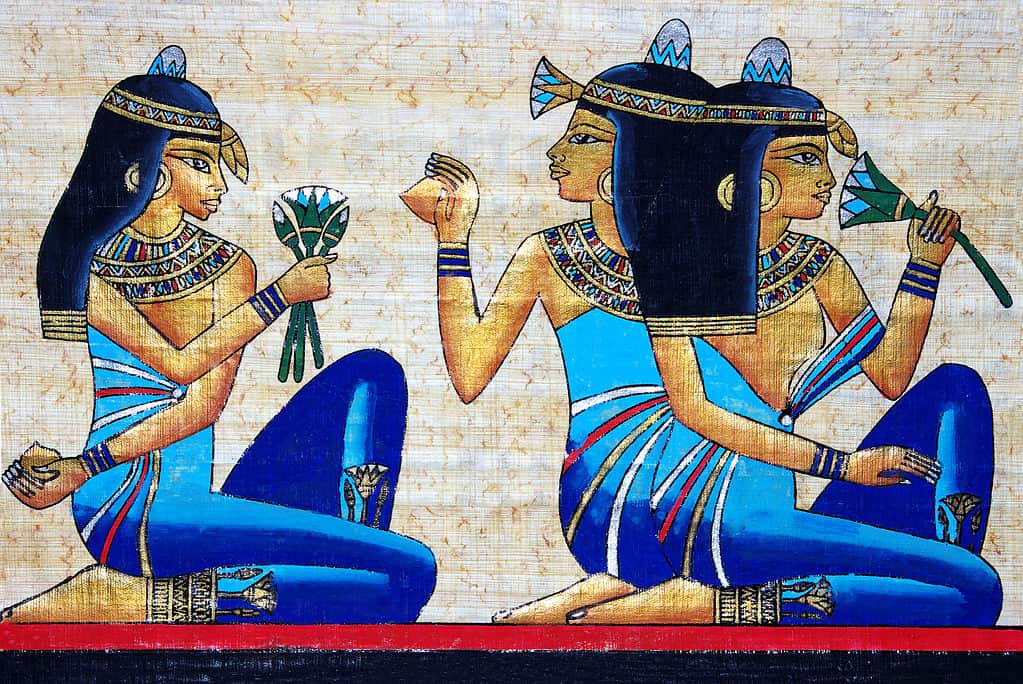
A theme of ancient Egypt’s mythologic stories include chaos versus order.
©leoks/Shutterstock.com
As evidenced above, the major cities of ancient Egypt used similar allegories in their creation myths to convey how the gods created life. Two central themes include the dichotomy of chaos and order and the constantly-present cycle of life and death.
Chaos and Order
Maat — or the concept of balance, order, and harmony in ancient Egypt — remained vital to the creation stories told. In the Heliopolis version, Ra would ride his chariot across the sky and battle Apep, the representation of chaos, to maintain balance in the world.
The deity Ma’at, who represented the concept of her name, helped ancient Egyptians understand how the universe maintained itself. Without a balance between order and chaos, the entire universe could crumble in on itself.
The Cycle of Life
The ancient Egyptians understood the cycle of life so much that they lived understanding that their existence was only part of a larger, universal cycle. The annual flood of the Nile, the rising and setting of the sun, and the acts of birth and death proved to ancient Egyptians that existence is cyclical, not linear. This ushered in the concept of rebirth.
In this life cycle, Egyptians regarded immortality as a constant cycle of rebirth. Those who lived lives deserving of rebirth would meet with Osiris in the afterlife. Osiris would guide them to their next existence. To achieve rebirth, however, ancient Egyptians had to fulfill dozens of requirements, practice specific rituals, and even get buried the correct way to ensure a consistent or better next life.
The Influence of Egyptian Creation Myths
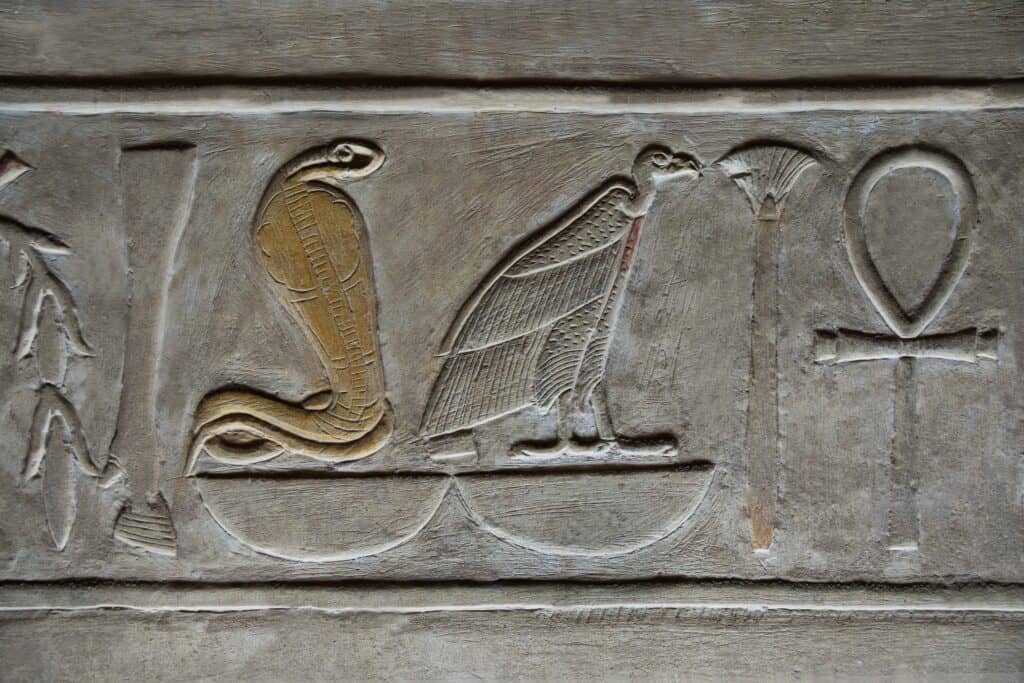
Myths influenced art, culture, politics, and religion in ancient Egypt.
©hemro/Shutterstock.com
As in other ancient civilizations, the mythology behind the creation of the world provided ancient Egyptians with an answer to life’s “big” questions. It offered a human aspect to the powers above and a reason for the natural phenomenon the people couldn’t explain with their limited knowledge of the world.
When it comes to art, culture, and politics, the Egyptian creation myths, pantheons, and general mythology set the very stage for society to grow. The polytheistic ancient Egyptians formed dozens of religious rituals around the oral traditions passed down through generations. Some traditions remain well-known today. For example, the mummification of bodies to ensure immortality. Or, the daily worship of gods and goddesses at temples you can still visit (like Abu Simbel, Edfu, and Karnak temples).
Primordial Waters, Cosmic Eggs, and Mysterious Beings
The Egyptian creation myths each offer a different way major city’s civilizations understood the world’s existence. Amid their diverse stories and deities, two themes stand out as the most vital to creation: chaos versus order and the cyclical relationship between life and death.
When you next visit Egypt, consider exploring one or more of the temples that still exist. You’ll have the opportunity to walk through a figurative portal into the culture, religion, and politics that ruled ancient Egyptian life.
Thank you for reading! Have some feedback for us? Contact the AZ Animals editorial team.

